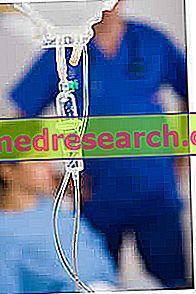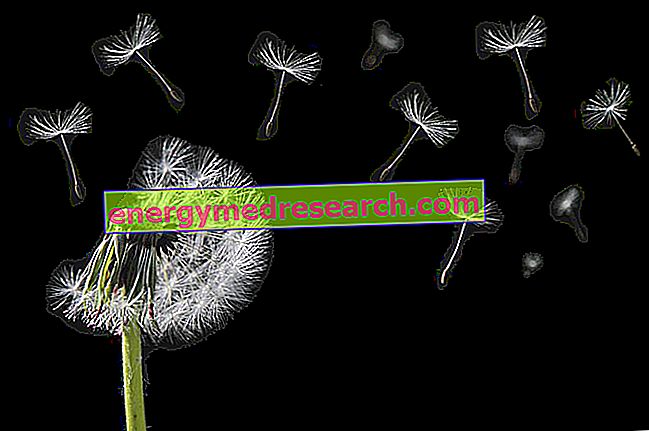LINCOCIN ® is a drug based on Lincomycin hydrochloride
THERAPEUTIC GROUP: Antibacterials - Antibiotics for systemic use
IndicationsAction mechanismStudies and clinical effectiveness Usage and dosage instructionsWarnings Pregnancy and lactationInteractionsContraindicationsUndesirable effects
Indications LINCOCIN ® Lincomycin
LINCOCIN ® is a drug used in the treatment of infections caused by anaerobic flora sensitive to lincosamides such as staphylococci, pneumococci and streptococci.
Given the potential side effects these drugs should be used as a second choice in case of ineffective activity or resistance to penicillins.
Mechanism of action LINCOCIN ® Lincomycin
Lincomycin, the active ingredient of LINCOCIN ®, is a natural antibiotic extracted from Streptomyces lincolnensis belonging to the class of lincosamides and endowed with a generally bacteriostatic activity.
The mechanism of action superimposable to that of macrolides, therefore characterized by the inhibition of protein synthesis mediated by the bond with the 50S ribosomal subunit and by the blocking of the lengthening of the nascent peptide chain, could explain a cross reactivity with macrolides and therefore also the same sensitivity to resistance mechanisms implemented by various microorganisms.
Administered both parenterally and orally, Lincomycin has a good bioavailability, homogeneously distributed in all tissues except the nervous one, given the inability to cross the blood-brain barrier with intact meninges, being metabolized into active metabolites.
Once this activity is completed, this active principle is mainly excreted via the bile while only 14% via the urine.
Studies carried out and clinical efficacy
1 LINCOMYCIN IN THE TREATMENT OF ACNE VOLGARE
Indian J Dermatol Venereol Leprol. 2003 Jul-Aug; 69 (4): 271-3.
Study that demonstrates how the topical use of 2% Lincomycin-based gels can be effective and well tolerated in the treatment of second and third degree vulgar acne.
2. LINCOMYCIN IN DENTAL PRACTICE
Ann Acad Med Stetin. 2009; 55 (2): 59-64.
Work demonstrating how the use of Lincomycin can be effective in preventing alveolar periostitis by reducing the complications of dental surgery and thus improving prognosis and clinical course.
3.LINCOMYCIN AND IMMUNE SYSTEM
Xi Bao Yu Fen Zi Mian Yi Xue Za Zhi. 2011 Jul; 27 (7): 763-6.
Interesting experimental study that demonstrates how the administration of Lincomycin can partly inhibit the immunoregulatory activity of dendritic cells, thus enhancing the host's defensive capabilities.
Method of use and dosage
LINCOCIN ®
Capsules of 544.81 mg of Lincomycin hydrochloride equal to 500 mg of Lincomycin Base.
Sterile solution for injection with 300 mg of Lincomycin base per ml of solution.
The dosing schedule useful in the treatment of infections caused by germs sensitive to Lincomycin varies according to the choice of the route of administration.
Generally for the oral one, the intake of 500 mg of Lincomycin is preferred every 6-8 hours depending on the clinical severity, taking care to avoid the ingestion of food and drink with the exception of water in the time interval between 2 hours before and after.
For parenteral use instead the administration of 600 mg of Lincomycin is preferred every 12 hours.
Variations in standard dosages should be provided for elderly patients and children.
Warnings LINCOCIN ® Lincomycin
As mentioned in the indications the use of Lincomycin should be considered as a second choice therapeutic option, if the Penicillins were not effective or administrable due to potential contraindications.
This limitation is linked to some side effects, especially gastro-enteric, observed following the use of Lincomycin, especially in patients with a history of intestinal disorders, responsible for severe diarrhea, sometimes with serious complications such as peritonitis, shock and megacolon toxic.
In these cases the endoscopic and first examination and the subsequent microbiological examination generally revealed the presence of pseudomembranous colitis from Clostridium Difficile, probably due to the imposing alteration of the intestinal microflora.
For this reason and given the metabolism of the drug, maximum caution is advised in the administration of LINCOCIN ® in debilitated patients, suffering from gastro-enteric, hepatic, renal pathologies and in patients with previous history of hypersensitivity to drugs.
PREGNANCY AND BREASTFEEDING
The absence of clinical trials capable of fully characterizing the safety profile of Lincomycin on the accidentally exposed unborn child and its ability to concentrate in pharmacologically active doses in breast milk, suggests avoiding the use of this drug during pregnancy and in the next period of breastfeeding.
Interactions
Although most of the data currently present in the literature refer to experimental studies, it would in any case be advisable to avoid the simultaneous intake of Lincomycin and:
- Macrolides for the enhancement of side effects;
- Erythromycin for the natural antagonism observed;
- Drugs with neuromuscular blocking activity to enhance inhibitory activity.
Contraindications LINCOCIN ® Lincomycin
LINCOCIN ® is contraindicated in patients who are hypersensitive to the active ingredient or to one of its excipients.
Undesirable effects - Side effects
The use of LINCOCIN ® especially when it lasts for a long time could be responsible for nausea, vomiting, persistent diarrhea and pseudomembranous colitis in severe cases, neutropenia and agranulocytosis, erythema and dermatological hypersensitivity reactions, hypertransaminasemia and, in more serious cases, shocks.
Occasionally, the appearance of erythema and pain at the injection site has also been reported.
Note
LINCOCIN ® is a prescription-only drug.



